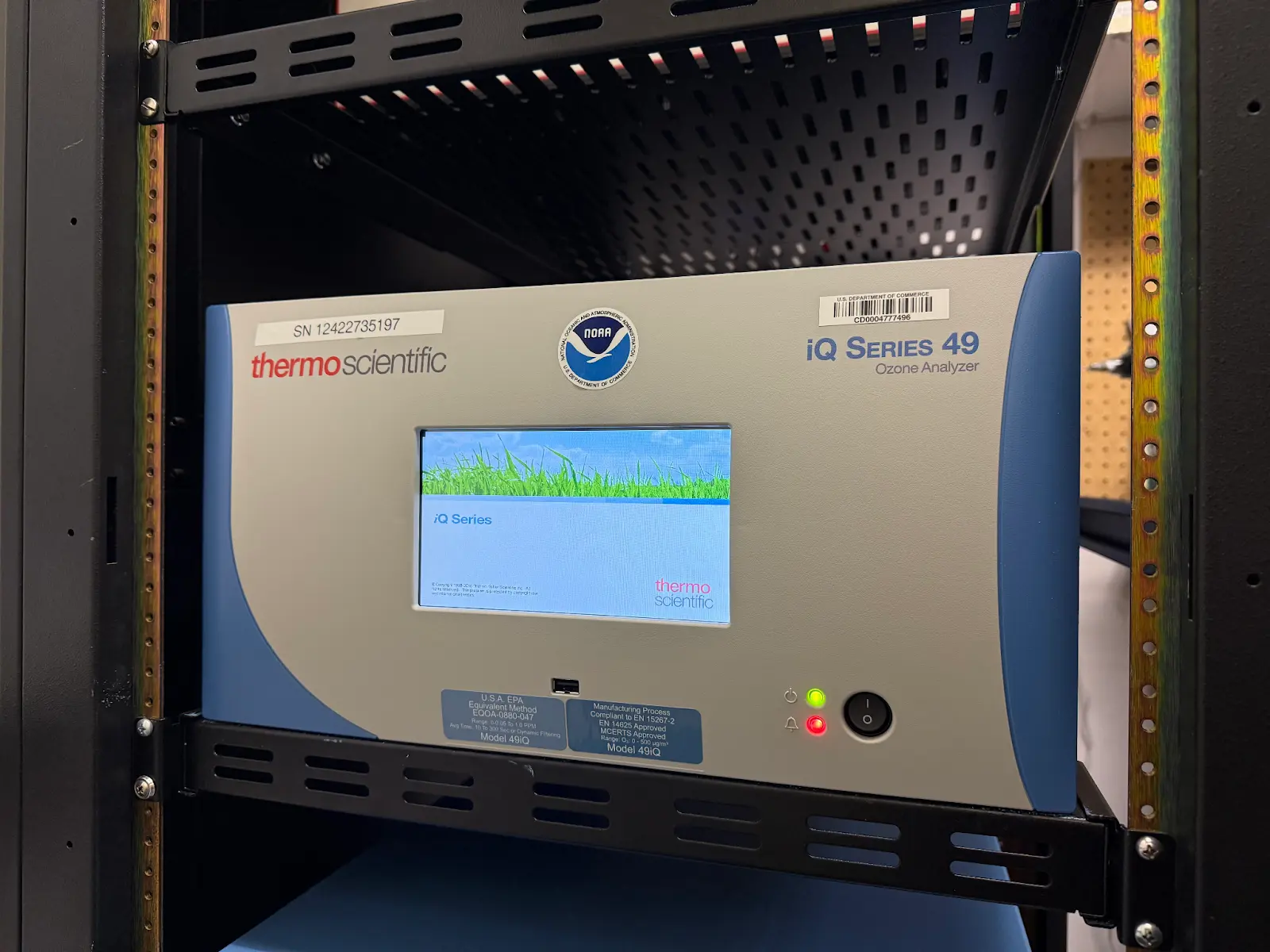GML Surface Ozone
Surface Ozone measurements are made by ThermoFisher Scientific Model 49 series instrumentation. These instruments are dual cell UV photometers which function on the absorption of UV light by ozone at 254nm and relating the UV absorption to the ozone concentration following the Beer-Lambert law. Sample air is pulled through a particle filter and into the instrument cells. Sample air enters one detection cell and “zero air” (charcoal scrubber removes all ozone in the sample) enters through the other cell. The ozone concentration is calculated from the UV light intensities detected from the two cells comparing the difference in the two cells. The instrument alternates the two cells to ensure that there is not a bias in one of the detection cells. The data is continuously collected at one minute intervals and averaged to one hour values for research and reporting to open data centers. ThermoFisher Scientific 49iQ instrument specifications
The instruments are routinely calibrated using ozone transfer standards (OTS). NOAA GML OTS’s are traceable to the NIST, BIPM, and EPA standard reference photometer family.. See: https://www.bipm.org/en/gas-metrology/ozone . NOAA GML Surface Ozone Network Quality Control and Calibration information can be found at: https://gml.noaa.gov/aftp/ozwv/SurfaceOzone/QA%20Docs/
NOAA GML follows the WMO GAW Guidelines for Continuous Measurements of Ozone in the Troposphere
In addition, the Surface Ozone Network has begun purchasing Nitrogen Dioxide (NO2) instrumentation to characterize the sources and sinks of surface ozone. NO2 is being measured by the Teledyne N500 “True NO2” Instrument. This instrument uses the Cavity Attenuated Phase Shift (CAPS) Spectroscopy. This instrument also relies on Beer’s law to derive the ambient concentration of NO2 from the absorption of light by NO2. However, instead of measuring the intensity of light directly, the CAPS instrument measures the phase shift of a modulating LED light in an optical cell. The path length of the light is reduced when NO2 is present. The concentration of which is proportional to this phase shift. Teledyne API Model N500 CAPS Instrument Specification

